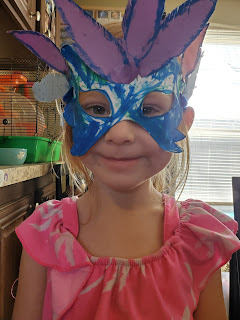After we wrapped up the African countries we chose to study this year, we moved onto South America and the beautiful country of Brazil!
 |
Basic Information
Brazil is a country in northeastern South America. It is bordered by Argentina, Bolivia, Columbia, French Guiana, Guyana, Paraguay, Peru, Surinam, Uruguay, Venezuela, and the Atlantic Ocean. The climate is mainly tropical and about 60% of the country is covered in rainforest.
Capital- Brasilia
Population- 212 million
Size- 3.3 million square miles
Currency- Brazilian real
National Anthem- Hino Nacinal Brasileiro
Flag-
Famous Places and Monuments
The Amazon Rainforest- The Amazon Rainforest covers most of the north western portion of Brazil as well as parts of Peru and Columbia. It is the world's largest tropical rainforest and is home to a huge variety of plant and animal life including: jaguars, anacondas, capybara, poison dart frogs, sloths, caiman, river dolphins, toucans, woolly monkeys, and more.
The Amazon River- The Amazon River is the largest river in the world by volume and either the longest or second longest in the world, depending on who you ask. Learn more about how rivers are measured and why there's not a clear answer as to which is longest, with this short video from Atlas Pro: What's the Longest River on Earth?
Sugarloaf Mountain- Sugarloaf Mountain is a peak in Guanabara Bay in Rio de Janeiro. It's cable car ride is a popular tourist destination.
Recipes
-Bolinho de Chuva com Chocolate (chocolate truffle filled doughnut holes) This is the recipe we tried and they turned out amazing!
-Feijoada (Brazilian black bean stew)
-Pao de queijo (Brazilian cheese bread)
Crafts and Activities
Layers of the Amazon Rainforest Activity
The Amazon Rainforest is home to an amazing array of wildlife including jaguars, anacondas, capybara, poison dart frogs, sloths, caiman, river dolphins, toucans, woolly monkeys, and more. Learn a little bit about some of the animals that live there with the following resources:
-Animals in the Amazon Rainforest
-What Animals Live in the Amazon Rainforest
Then watch this short video about the 4 layers of a rainforest: Layers of the Rainforest.
Next grab a free printable layers of the rainforest activity here. Have your child cut out the animals and glue them in the correct layer of the rainforest.
Carnival Masks!
Carnival is a celebration similar to Mardi Gras. It is one last big celebration before the season of Lent begins. In Brazil Carnival includes, parades, street fairs, parties, costumes, fancy masks, and lots of tasty food.
Watch a short video about Brazilian Carnival and then try making some colorful Carnival masks!
-10 Fascinating Facts About Brazilian Carnival
For our masks we used these free printable templates from 123kidsfun: Free Printable Masquerade Masks. Then we decorated them with markers, puffy paint, glitter, sequins, and feathers.
Additional Activity Ideas
-Research about Brazilian history and make a timeline
-Choose an animal of the Amazon Rainforest to research and write a short report about
Additional Resources
Websites:
-Brazil Country Profile from National Geographic Kids
-Geography for Kids- Brazil from Ducksters
Videos:
-Explore the Rainforest! Ecology for kids video from SciShow Kids
-Rainforests 101 from National Geographic
-Brazil! video from Geography Now!
Books:
-Where is the Amazon by Sarah Fibiny
-Little Kids First Big Book of the Rainforest from National Geographic Kids
If you enjoyed this post be sure to check out the other posts in my Learning About the Countries of the World series!
Follow me on:








Comments
Post a Comment